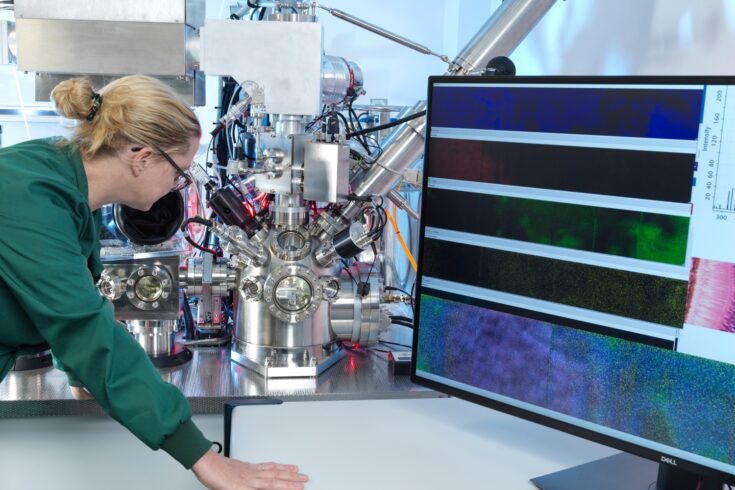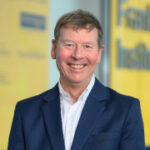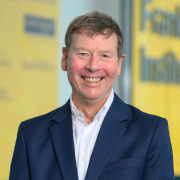I have found the first few months incredibly exciting! I still am getting a thrill from coming to the Harwell Science and Innovation campus: driving past RAL Space and Diamond, then walking by the Central Laser Facility, the ISIS Neutron Source and the new National Quantum Computing Centre to enter the Rosalind Franklin Institute. The Franklin is part of a simply incredibly powerful national science ecosystem at Harwell!
Although I was trained as a neurologist, my career has always been based around harnessing the strengths of interdisciplinary science teams drawn from the physical and life sciences and medicine to address important questions. In fact, the health and life sciences depend on fundamental engineering and physical sciences research.
I’m eager to take on the challenge of leading Franklin into the next phase of its mission. This will be to ‘develop disruptive new technologies designed to tackle major challenges in health and life sciences’, the premise under which government investment in the Franklin was founded.
I have been delighted to see the strong support for this vision for the Franklin from UK Research and Innovation (UKRI), Engineering and Physical Sciences Research Council (EPSRC) and my new colleagues here and from the wider UK academic community. Key to success also will be new partnerships with leading international groups and industry.
My time so far
I have tried to spend much of the last three months at the Franklin listening. I have been genuinely energised by the enthusiasm that Franklin scientists have for what they do. There is a diversity of backgrounds – our scientists have come from all over the world – and ideas. They have impressed me with how they can think ‘out of the box’. They share a big vision of what interdisciplinary science for advanced imaging in the life sciences can achieve.
My listening has had a purpose. It has allowed me to lead in co-creation of a refresh of the Franklin science strategy. I want to ensure we can deliver on the initial challenges the institute was set when government investment through EPSRC was made to establish the Franklin.
Our refreshed science strategy builds on addressing the technology challenges of imaging proteins in the cell at a near atomic level and using this to build a ‘digital twin’. This will ultimately lead to predictive structural models of how proteins behave in the cell. Super-ambitiously, this is about the foundations for an ‘AlphaFold’ of proteins as they are in their native cellular environments.
Insights from this will underpin new ways of understanding how cells compartmentalise their chemistries and interact with other cells and pathogens. This will support new approaches for diagnostics and medicines development.
With a clear vision for the future, we will also be able to attract and work with the many potential partners local to us at Harwell and more widely in academia and industry.
Team Science
We have set real ‘stretch’ goals for ourselves. I am keen to help everyone here achieve more by thinking about how we do our science. One idea has come forward clearly from this. We can build on the open, collegial spirit of the Franklin to work even more explicitly in teams.
Developing a strong Team Science ethos will allow us to bring in a greater diversity in our leadership, to better engage our staff and students and to further break down communication and technical barriers between disciplines.
Fortunately, this is not a new idea to the Franklin! Since its inception, the Franklin has been pursuing much of what it does through work in large, interdisciplinary teams. For example, our structural biology, next generation chemistry and correlated imaging themes are currently working together to produce new probes for electron microscopy.
There are several aspects to this project, from detection to probe design and delivery, so it requires a large team with a lot of different expertise. By strengthening our commitment to recognising and rewarding people for their contributions to this kind of team science, we can achieve even more – and faster.
Establishing new partnerships
I can rightly celebrate the enormous range of expertise assembled in the Franklin. But it is not enough on its own. To deliver the ambitions I have for our science and for the impacts than can come from it, we will need to build new partnerships with academia and industry. Enhancing our partnerships with universities, other UKRI facilities and instrument manufacturers, we can drive faster innovation in imaging technologies. By deepening our partnerships with the pharmaceutical industry, we can accelerate the translation to deliver outcomes for the people who need them.
I see a major part of my role as helping to realise these partnerships to build a supportive ecosystem around the Franklin, both locally on the Harwell campus and more broadly within the UK and internationally. We want to engage and involve the wider community in the mission to create transformative new tools and then demonstrate their value to future health and wellbeing.
Recognising this, I began reaching out to current or potential partners from my first week. I am confident that the willingness of scientists all across the UK to work together and the well-established models for mutually supportive industry and academic interactions have established a fertile environment in which the Franklin can thrive. I am looking forward to seeing what we can all achieve together over the next exciting decade!
Find out more about the Franklin and keep an eye out later for an outline of their new strategy which will be launched fully later this year.




